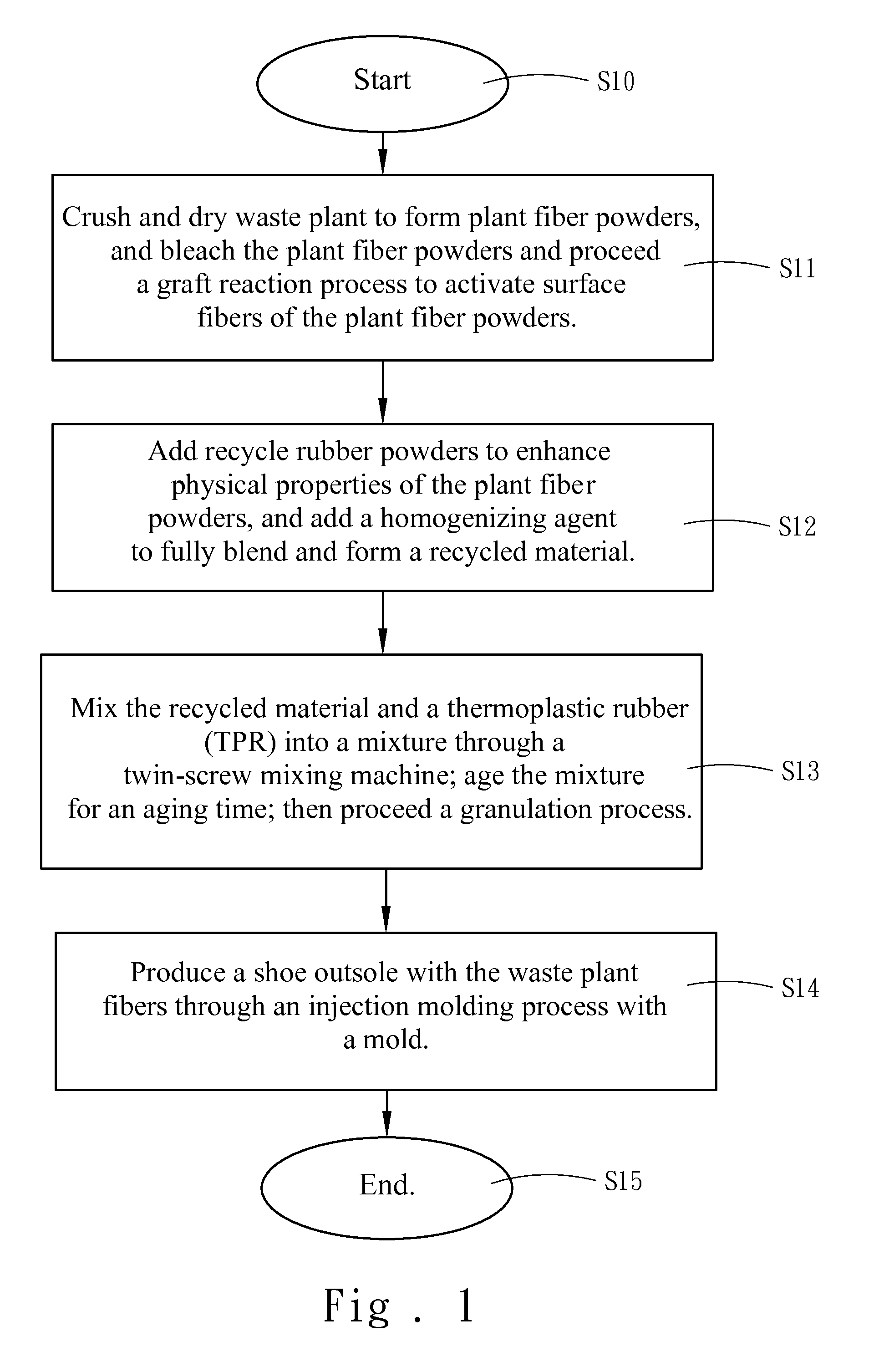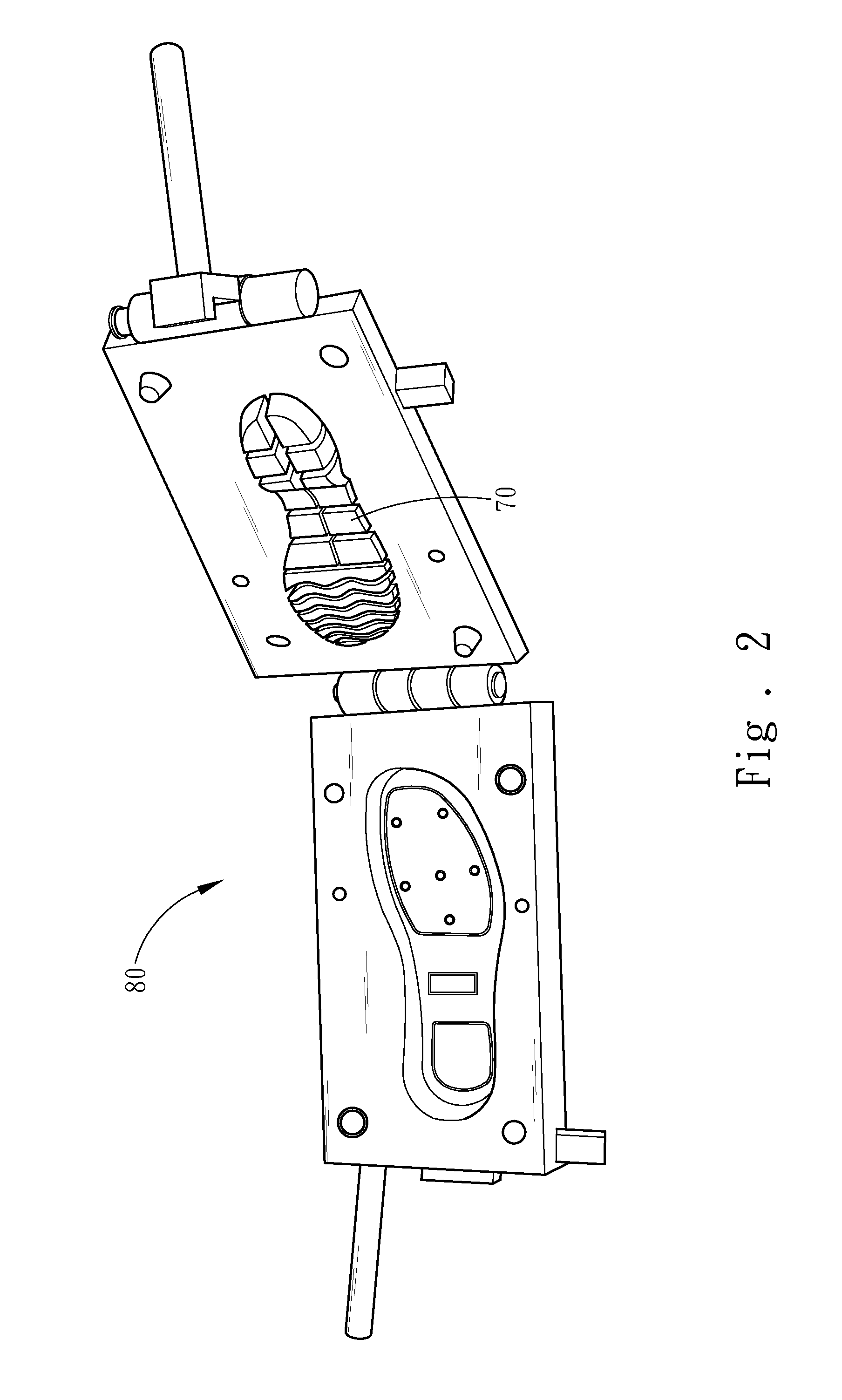Method of manufacturing shoe outsoles from waste plant fibers
a technology of plant fibers and outsoles, which is applied in the field of manufacturing shoe outsoles from waste plant fibers, can solve the problems of plant waste that cannot withstand high temperature, the depletion of earth's resources at an alarming rate, and the inability to meet the needs of shoe outsoles, etc., and achieve the effect of improving the physical properties of plant fiber powder, reducing the cost of shoe outsoles, and improving the undesirable physical properties of shoes resulting from conventional techniques
- Summary
- Abstract
- Description
- Claims
- Application Information
AI Technical Summary
Benefits of technology
Problems solved by technology
Method used
Image
Examples
Embodiment Construction
[0016]Please refer to FIGS. 1 through 4 for the method of manufacturing shoe outsoles of the present invention and a shoe product mold 80, a grinding mill 100 and a twin-screw mixing machine 90 used in the method. FIG. 1 illustrates the flowchart of the method of the present invention for making the shoe outsoles with waste plant fibers. The method includes steps S10 to S15.
[0017]Step S10: Start.
[0018]Step S11: Crush waste plant fibers through the grinding mill 100 and dry to form plant fiber powders; bleach the plant fiber powders and proceed a graft reaction process to activate surface fibers of the plant fiber powders.
[0019]Step S12: Add recycle rubber powders to enhance the physical properties of the plant fiber powders; next, add a homogenizing agent to fully blend and form a recycled material. By mixing the plant fiber powders and the recycle rubber powders, the physical properties of the plant fiber powders can be enhanced. By adding a homogenizing agent, the hydrophilic plan...
PUM
| Property | Measurement | Unit |
|---|---|---|
| physical properties | aaaaa | aaaaa |
| hydrophilic | aaaaa | aaaaa |
| lipophilic | aaaaa | aaaaa |
Abstract
Description
Claims
Application Information
 Login to View More
Login to View More - R&D
- Intellectual Property
- Life Sciences
- Materials
- Tech Scout
- Unparalleled Data Quality
- Higher Quality Content
- 60% Fewer Hallucinations
Browse by: Latest US Patents, China's latest patents, Technical Efficacy Thesaurus, Application Domain, Technology Topic, Popular Technical Reports.
© 2025 PatSnap. All rights reserved.Legal|Privacy policy|Modern Slavery Act Transparency Statement|Sitemap|About US| Contact US: help@patsnap.com



